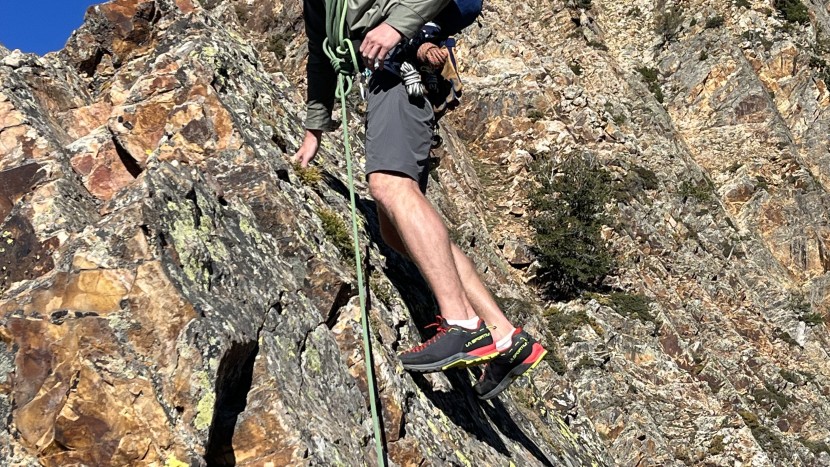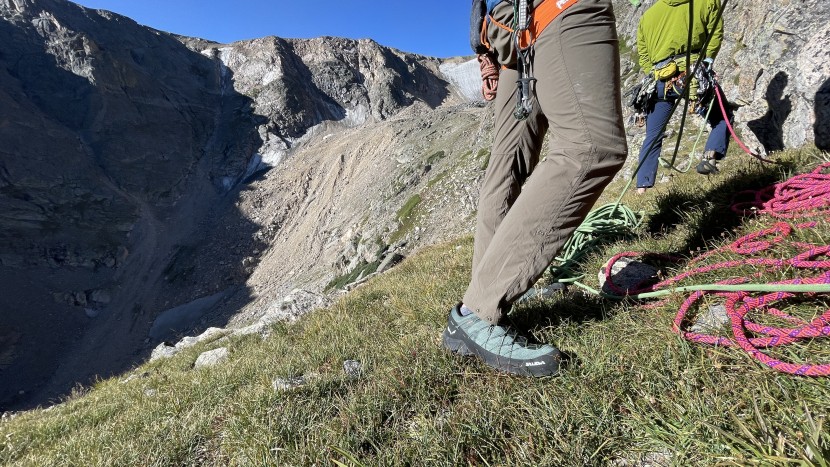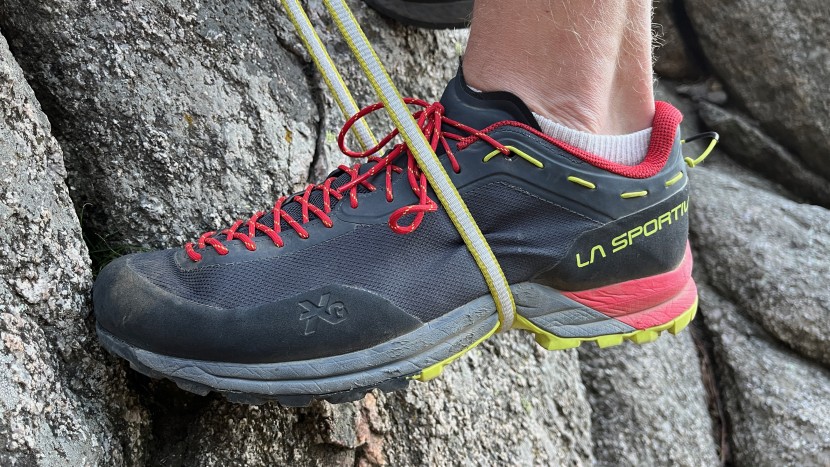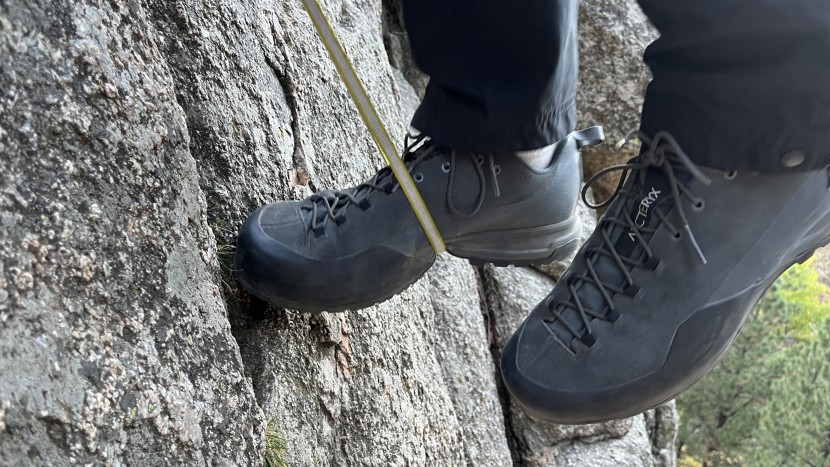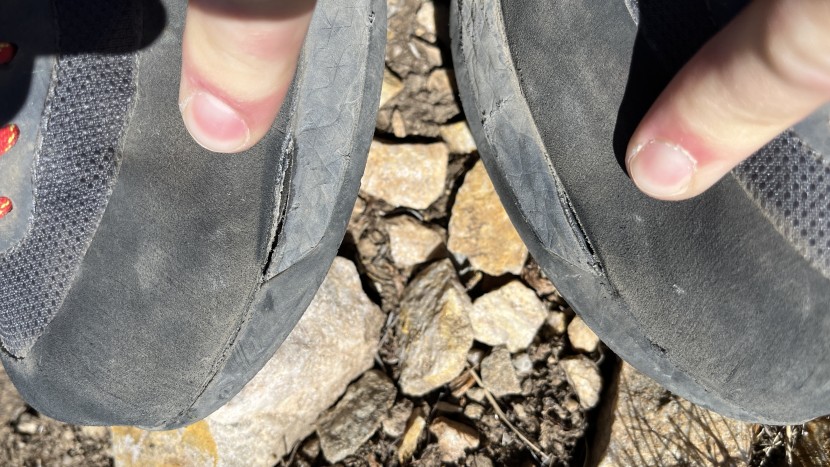Nearly everyone here at GearLab spends a lot of time climbing, from big wall routes to sport climbing and bouldering and everything in between. We've burned through countless pairs of approach shoes over the years, and we are happy to share our collective experience with you.
Our lead testers assessed these approach shoes while climbing in the High Sierra, around the Bishop, Lake Tahoe, and Boulder regions, and on numerous other climbing adventures in California, Nevada, Utah, and Colorado.
We devised an updated set of evaluation metrics that balance climbing ability with hiking ability. We independently weighed each of the models we tested. We probably looked a little strange bouldering in Bishop and trekking up to Indian Creek crags wearing one Scarpa shoe and one La Sportiva shoe, but that's how we test: side-by-side.
Climbing Ability
We climbed slab routes, edging routes, splitter cracks, and offwidths. We also bouldered, scrambled, and ran around the mountains to get a good feel for each shoe's performance and security. Some of our favorite routes to test approach shoes are Northwest Books on Lembert Dome in Tuolumne Meadows and the East Face of the Third Flatiron in Boulder, Colorado. Easy to moderate rock climbing routes are the best places to wear approach shoes, and in some cases, our testers free-soloed these routes when they were confident that the shoes had the necessary performance to keep us safe. Other shoes gave us very little confidence when free soloing or even lead climbing, and we took these assessments into consideration when scoring.
Other times, we tied in for top-rope and lead laps on pitches up to 5.10 to really test the limits of the performance of each shoe. We repeat the climb for each pair of shoes to highlight the strengths and weaknesses of each.
Hiking Comfort
We walked, hiked, and slogged to crags and through alpine valleys with light packs for climbing or heavy packs for search and rescue missions. We made careful note of instability, sore arches, and rocks entering around the cuff. If your feet already hurt before you get to the climb, putting them in climbing shoes isn't going to make them feel any better.
Weight & Packability
The easiest and most objective of our metrics is determined by first weighing each pair of shoes and then climbing around with them clipped to our harnesses. Models with an easy attachment for a carabiner scored more points in this field, and lighter pairs scored better than heavier pairs. We also measure how small each shoe packs down for carrying inside a pack.
Support
Standing in aiders isn't comfortable. That's why aid climbers spend most of their time in supportive approach shoes and only occasionally dawn a pair of actual climbing shoes. To assess support, we stood in aiders, jumared up fixed ropes, and stood around in slings at the crag. Generally, a stiffer shoe is more supportive and comfortable for standing in slings.
Construction Quality
After spending weeks and sometimes months in each pair of shoes, we assessed how normal wear and tear affected different components of each shoe. We look for sole rubber wearing thin or delaminating from the midsole, upper fabric developing tears or holes, and lace eyelets blowing out from repeated tension. We also speak with other users, look for common durability problems, and try to replicate these issues with the products we test.



